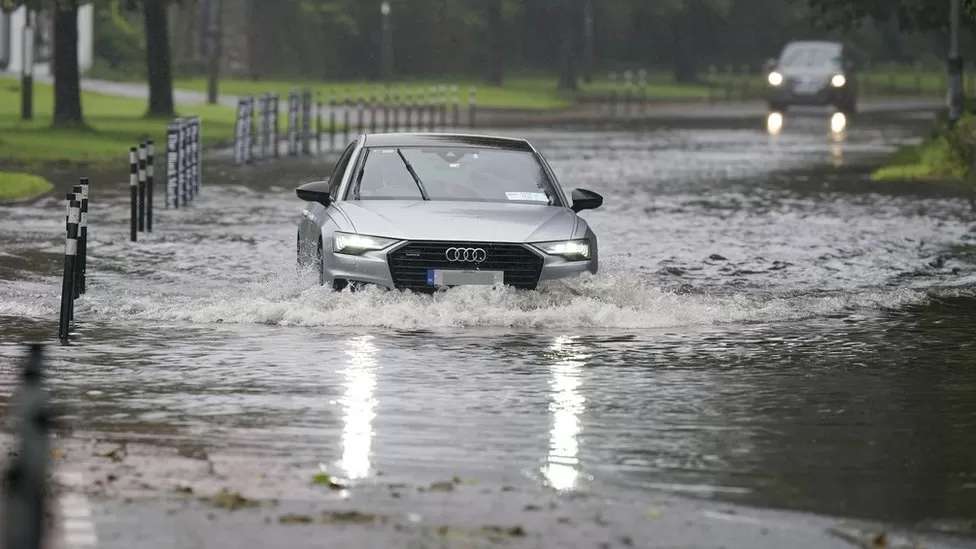Weather warnings are in place in Northern Ireland and the Republic of Ireland as Storm Agnes makes landfall on the island.
The storm - which is the first named storm of the season - is forecast to bring strong and disruptive winds until Thursday morning.
It is expected to arrive in Northern Ireland at lunchtime.
The Met Office and Met Éireann have warned of the possibility of disruption to travel.
In the Republic of Ireland a status orange wind warning for counties Carlow, Kilkenny, Wexford, Cork, Kerry, Tipperary and Waterford is in force until 17:00 BST, while an orange warning for rain is in place for Cork, Kerry and Waterford until 15:00.
A status yellow warning for rain is in place for Carlow, Dublin, Kilkenny, Wexford, Wicklow, Cork, Kerry and Waterford until midnight, with a yellow warning for wind covering Leinster, Munster and Galway during the same period.
There has been some flooding in Cork and at least one road was blocked by a fallen tree while there is disruption to P&O Ferries services between Larne in Northern Ireland and Cairnryan in Scotland.
In Northern Ireland a yellow warning for rain is in place until 20:00, with a yellow warning for wind active until Thursday at 07:00.
The Met Office has warned up to 30mm (1.2in) of rain could fall in a few hours in some places, while parts of the Mournes and Sperrins could see up to 50mm.
This could lead to an increase risk of flooding as the storm continues to push north and east.
Storm Agnes is expected to bring a period of strong and disruptive winds from Wednesday afternoon into early Thursday.
It will track northeast across Northern Ireland before clearing tomorrow.
Gusts of 45-55mph are expected inland, with speeds of 50-60mph over hills and along coasts.
The strongest winds are anticipated in more exposed coastal areas and headlands, with gusts possibly up to 75mph.
These conditions are most likely to occur during Wednesday afternoon and into the evening.
Injuries from flying debris and fallen trees are possible, and some damage to buildings, such as tiles being blown off roofs, could occur.
Power cuts are likely and rail, road, air, and ferry service could be affected, leading to longer journey times and possible cancellations.
Coastal areas are likely to be affected by large waves with beach material possibly being thrown onto seafronts, coastal roads, and properties, along with he possibility of coastal road flooding.








